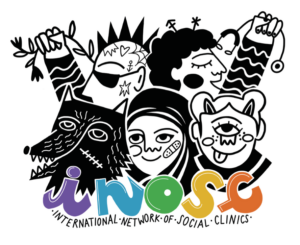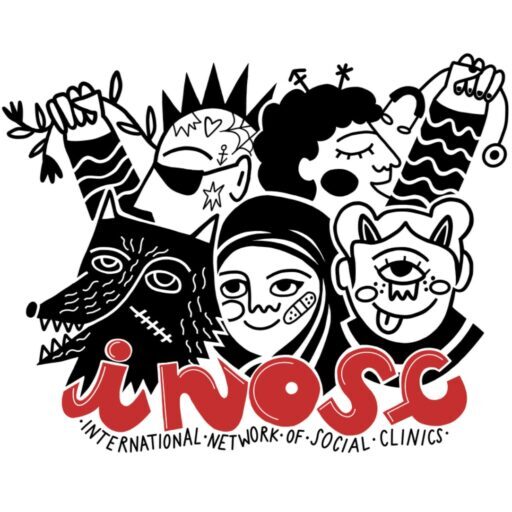section 1: neo-liberal policies and relations with public health system
 Over the past few decades, neo-liberalism has affected global health by acting as a structural determinant of health. It influences health policies both directly and indirectly, at both national and international levels, impacting all the other determinants of health. Neo-liberalism’s disinvestment in public welfare and the collapse of universal healthcare systems are interdependent processes. This makes it difficult to distinguish the causal relationship between these processes and rising chronic diseases, which are largely driven by declining quality of life for the majority of the population.
Over the past few decades, neo-liberalism has affected global health by acting as a structural determinant of health. It influences health policies both directly and indirectly, at both national and international levels, impacting all the other determinants of health. Neo-liberalism’s disinvestment in public welfare and the collapse of universal healthcare systems are interdependent processes. This makes it difficult to distinguish the causal relationship between these processes and rising chronic diseases, which are largely driven by declining quality of life for the majority of the population.
At the core of both processes is an ideological belief that markets are more efficient at allocating resources in an individualistic society driven by economic and material interests. In this context, any form of welfare is rejected as an interference with the market and is therefore deemed incompatible. Health reforms over the last three decades have been driven by this neoliberal agenda. Governments have implemented neo-liberal principles to all aspects of social and individual life through:
• privatising and commodifying the public sphere;
• deregulating the private sector, with health insurance playing an increasing role; •reducing taxes on capital;
• cutting public spending;
• restricting union power, leading to lower wages;
• applying managerial approaches to healthcare programs and policies.
This shift has turned health systems into markets and healthcare into a commodity. Today, the patient is treated as a consumer, the disease becomes a commodity, and “treatment” – provision of services – is merely the product being sold. Furthermore, both public and private healthcare workers have seen their working conditions deteriorate dramatically, with lower pay, longer hours, and increased pressure. These mechanisms have also led to the creation of countless ‘medical deserts’, areas where a severe shortage of healthcare personnel limits access to essential services.
Subjecting healthcare to market forces has had devastating effects on societies. Clinical medicine has deteriorated, and the therapeutic relationship has weakened. Treatment now
focuses solely on symptoms, dictated by rigid protocols that prioritize specific procedures and medications, often to the patient’s detriment. The very essence of medical science has also been affected by these changes. Medical practice has become increasingly fragmented, with more specializations and a focus on promoting costly therapies (as we will explore in Section 2). Furthermore, due to increased time pressure, doctors now depend more on diagnostic tests than on clinical evaluations.
Prevention is treated as an individual matter and a moral responsibility, such as through regular check-ups or maintaining a healthy lifestyle. Meanwhile, the structural, environmental, and social factors that affect both individual and collective health are overlooked. Poverty, unemployment, and precarious work-direct and indirect results of neo-liberalism, capitalism, colonialism, patriarchy, and racism-have been shown to negatively impact public health. Ecological degradation, along with the contamination of food, the natural environment, water and air, has been linked to higher rates of cancer, diabetes, obesity, and other health disorders. Yet, the structural processes driving health inequality remain unaddressed by the dominant healthcare model. Instead, the dominant model perpetuates unhealthy structures rooted in Neo-liberal bio-politics.
The SARS-CoV-2 emergency brought these issues into sharp focus. The environmental crisis in particular has returned to the forefront, with radical transnational ecological movements highlighting its implications from a political ecology perspective. This global event accelerated and exacerbated the issues we have described, making the failures of neo-liberal policies even more apparent.
COVID-19 also demonstrated that in countries where health services were privatized, governments struggled to control the spread and severity of the disease. Similarly, where public health systems were dismantled, they failed to protect the population–particularly marginalized and vulnerable groups. Primary care, already severely reduced by Neo-liberal health reforms, turned out to be a key factor in the health system. Yet, this recognition has not resulted in a reversal in terms of policy or increased resource allocation in health systems. While there was a significant influx of resources during and after the initial phases of the pandemic, these funds were channeled through vertical support programs. Such programs provided only limited financial or material aid and did not lead to a structural reorganization of welfare services. This “new” phase of Neo-liberalism still aims to preserve existing power structures and promote further consumerism.
Although Social Clinics operate in different contexts, when analyzing health and healthcare under neo-liberalism, we see a series of commonalities. In all contexts, the legal right to healthcare does not always translate into actual access to services. Even in countries with universal healthcare coverage, there are often obstacles to health services. For instance, many face numerous barriers when seeking a voluntary termination of pregnancy or attempting to access healthcare services without a residency permit. Similarly, our different national healthcare systems are under constant threat of privatization. Private sector involvement can be found within state healthcare systems, challenging the idea that state services necessarily equate to public services, particularly in the realm of healthcare. Finally, we noticed that there are specific medical issues which are not normally covered by state healthcare. This phenomenon can be observed in dental care, where systematic exclusion from free public services is evident. Indeed, dental care predominantly relies on private sector provision, leading to high costs and consequently rendering it inaccessible to a significant proportion of the population.
 While Germany generally has universal healthcare insurance that also covers mental healthcare, this does not mean that people have equal access to healthcare. First of all, there are statutory and private insurances. People with higher incomes can afford private insurance, which often means faster and better treatment. Some people are excluded from health insurance if they do not have a residence permit. Other people may be able to obtain insurance but have to face other barriers, such as language and mobility, whilst trying to get treatment.
While Germany generally has universal healthcare insurance that also covers mental healthcare, this does not mean that people have equal access to healthcare. First of all, there are statutory and private insurances. People with higher incomes can afford private insurance, which often means faster and better treatment. Some people are excluded from health insurance if they do not have a residence permit. Other people may be able to obtain insurance but have to face other barriers, such as language and mobility, whilst trying to get treatment.
The biggest barrier, however, is the shortage of licensed practices. This is due to outdated regulations based on assessments that no longer reflect current needs. As a result, even insured individuals may struggle to find practitioners with the capacity to accept new patients. Also, waiting times to see specialists can be as long as six months. This issue is particularly severe for those seeking psychotherapy, which involves a complex application process that can be overwhelming for people with mental health conditions. Waiting lists for psychotherapy can be as long as 18 months.
 In France, healthcare coverage depends on income. Some people have public universal healthcare insurance, while others only have 70% of the public healthcare insurance and are recommended to also have private insurance for the remaining 30%. Yet, even many of those eligible for universal insurance have no access to it due to excessive bureaucracy.
In France, healthcare coverage depends on income. Some people have public universal healthcare insurance, while others only have 70% of the public healthcare insurance and are recommended to also have private insurance for the remaining 30%. Yet, even many of those eligible for universal insurance have no access to it due to excessive bureaucracy.
People without a residency permit can access public healthcare, but they must navigate a complicated process. Public insurance does not provide comprehensive dental and ophthalmology care. In addition, patients often have to pay for services upfront and then get reimbursed by the insurance.
Although fees are regulated, some practitioners charge extra and these additional costs are not reimbursed by the insurance.
As in Germany, one of the main barriers is the shortage of recognized practitioners, a problem caused by outdated regulations. Part of the French population does not have access to a GP, and specialist appointments are also hard to obtain. The ease of accessing a practitioner varies by region. In France there are no regulations concerning where doctors have to work, resulting ni some areas becoming “medical deserts”.
Public hospitals face worsening conditions due to inadequate funding. Many healthcare professionals have left the public sector since the COVID-19 pandemic due to challenging working conditions. Other barriers include difficulties in booking appointments through digital platforms, language barriers, and mobility issues.
 The Italian healthcare system, Servizio Sanitario Nazionale (SSN), is a universal and comprehensive service designed to provide medical care to all Italian citizens and residents. Established in 1978, it is funded primarily through taxation and falls under the governance of the Ministry of Health.
The Italian healthcare system, Servizio Sanitario Nazionale (SSN), is a universal and comprehensive service designed to provide medical care to all Italian citizens and residents. Established in 1978, it is funded primarily through taxation and falls under the governance of the Ministry of Health.
The SSN offers awide array of healthcare services, encompassing hospital care, outpatient services, specialist consultations, and prescription medications. It is designed to ensure healthcare access for everyone, regardless of financial status, according to the principles of universal health coverage.
However, the Italian healthcare system faces several challenges. Privatization is one of them, with an increasing presence of private healthcare providers alongside the public system. This has raised concerns about the potential prioritization of profit over patient care.
Another issue is the trend towards “corporatisation” where hospitals and healthcare facilities are transformed into semi-autonomous entities with greater administrative independence.
While presented as a way to improve efficiency, it has led to variations in the quality of care and resource allocation between regions and a general decline of healthcare services. Also, long waiting lists for elective procedures in some regions pose a significant challenge, impacting the quality of care and patient satisfaction.
 In Greece, the National Health System (EZ was established in 1983, significantly later than similar systems in other European countries. Our National Health System is mostly hospital-centered, investing more on hospitals more than on primary healthcare, which has, in turn, been insufficiently developed. While the public system has faced continuous degradation, the private sector has historically maintained a privileged support from all Greek governments, leading to its increased control over various healthcare services.
In Greece, the National Health System (EZ was established in 1983, significantly later than similar systems in other European countries. Our National Health System is mostly hospital-centered, investing more on hospitals more than on primary healthcare, which has, in turn, been insufficiently developed. While the public system has faced continuous degradation, the private sector has historically maintained a privileged support from all Greek governments, leading to its increased control over various healthcare services.
Funding comes from the state budget, insurance bodies, and private donations. Public health spending as a percentage of GDP has fallen significantly, from 6.8% in 2009 to 4.8% today, according to the latest OECD report.
Staffing and working conditions
Chronic under-staffing is a major issue for the Greek Healthcare System. The number of medical staff positions fell from 52,000 in 2009 to just over 18,000 by 2018, while the average age of permanent staff is 59 years.
Working conditions, particularly for junior doctors, are harsh, with many on-call duties each month and low pay. The system has also increasingly relied on temporary contracts, such as 18-month auxiliary doctor contracts, hourly wages, block contracts, and three-month contracts.
Access for the citizen
Until around 2000, public health services were free for al. In 2011, uninsured individuals were excluded from al medical services, leaving over 3 million people without access to healthcare facilities. In 2016, uninsured people regained the right to access public health services, but those without legal documents or residency permits (estimated at over 500,000) remain excluded.
Access to public health services is hindered by chronic under-staffing and the ongoing weakening of the healthcare system. During the COVID-19 pandemic, it became almost impossible to receive adequate hospital care, and OECD statistics show that life expectancy in Greece fell by six months during the crisis years.






